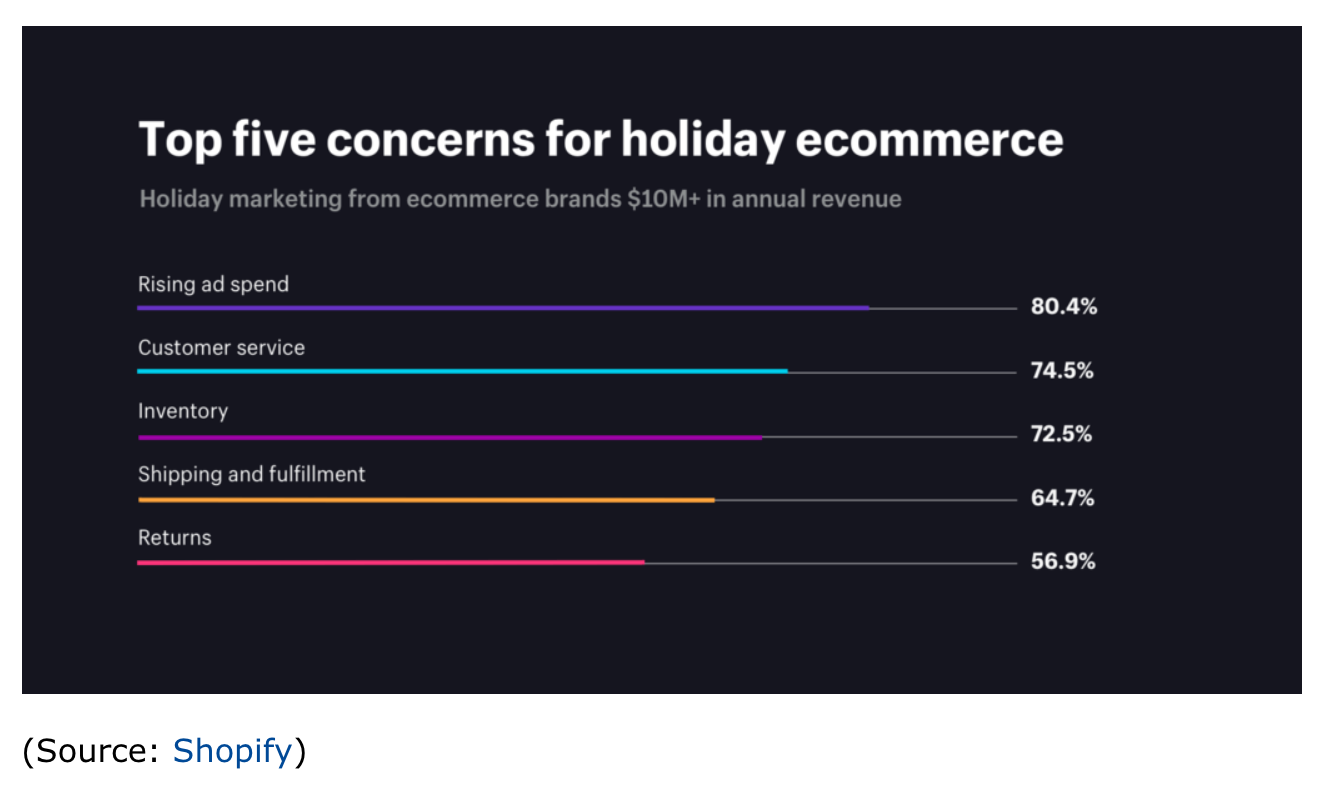Get Ready for the Weirdest Holiday Shopping Season Ever

eCommerce has been a whirlwind in 2020 but a major test for merchants will be how they maximize conversions during the Black Friday/Cyber Monday (BFCM) period – arguably the most important one ever for online shopping.
It’s still summertime, yet we’re already seeing pumpkins, turkeys, and reindeer everywhere – while the word ‘Holiday’ seems to be taking over our social feeds.
It will be no surprise that what’s coming in the next few months, much like the rest of the year so far, will be anything but ordinary.
Black Friday, Cyber Monday, and the rest of the holiday shopping season have historically been the biggest growth opportunities for merchants – but will the same strategies that worked in the past succeed in our pandemic-affected world?
We set out to learn about what brands have done in the past to win at The Holidays™ (grow RPV, AOV, and CR), why that may not work in 2020, and what you can do to finish off the year with a bang (not a whimper).
Preparing for changes in how customers buy online mid-pandemic
There’s nothing new about businesses getting ready ahead of time for increased traffic, but this year things are different. According to ShopperTrak, online shopping grew 14% in 2019 while brick and mortar sales fell by 6.2%. Brands have slowly adapted to this shift, although its sudden acceleration may be throwing a curveball at many unsuspecting eCommerce teams.
“Holiday shopping will be done digitally in 2020. Not some of it. Not the majority of it. All of it. (Fine, maybe not all of it, but you catch my drift.) To think otherwise at this point is to be wholly unprepared for what’s to come.” – Alissa Lydon, Director of Product Marketing, Sauce Labs
So, what do online merchants usually do to prepare for busiest season of the year? Historically, it’s been all about playing it safe. Right at the end of summer, eCommerce teams tend to put their sites on lockdown – they ‘freeze their code’. What does this mean? All site changes are put on hold to minimize chances of anything ‘going wrong’ and hurting sales.
Has this approach been successful? Well, this is where things get interesting. While a code freeze seems to make a lot of sense on paper, the data says otherwise. We ran studies in 2018 and 2019 that proved merchants are actually missing out on significant revenue by keeping their sites unchanged during the fall and winter months.
Scale and adaptation is the new requirement – massive influxes of new traffic may not help you if your shopping experience doesn’t convert. If a million new visitors come to your site and only 1% of them actually end up buying, is that really a win?
What eCommerce teams should be concerned about for 2020’s Holiday season
According to Salesforce, up to 30% of holiday sales this season could be driven by eCommerce.
Brick and mortar businesses will still have their place, perhaps much more so as fulfillment centers than before, but it’s clear that online stores will need to bring their A-game.
“Brands recognize that the holiday season is a major opportunity to drive sales. However, they need to shift their perspective if they haven’t already to focus on the customer experience, beyond the sales transaction,” – Paula Hansen, Chief Revenue Officer at SAP Customer Experience
What’s at stake? Losing visitors to competitors, decreased engagement, lower conversion rate, and possibly worst of all, a missed opportunity to get to serve your customers better – what delights them, how they like to pay, what obstacles they’re facing, and the list goes on.
Online shopping is booming this year, but it also comes with a new set of challenges.

One example is the fact that many new users, namely new-to-digital shoppers, will be purchasing items online for the first time in their lives. Another potential issue is the strain on shipping and especially returns. Is your site ready to accommodate a diversity of visitors? Will existing customers trust their purchases to be delivered in time for the holidays amidst this shaky economic climate?
These are just a few potential concerns worth noting that could make the difference between millions in revenue earned – or lost.
What we learned from prior holidays and how it applies to 2020
Customer experience (CX) strategy has played a key role for many retail brands, such as Target, who have successfully capitalized on the busy holiday season year over year.
While CX is a general term that covers a wide range of topics including optimization, checkout, design, and much more, analytics give eCommerce teams a good idea of where to focus improvements on specifically.
“When teams in charge of CX don’t understand precisely how visitors feel when interacting with their digital properties, ensuring customer happiness is nearly impossible. To be successful during the holidays, brands need deep insights into user behavior. Cart abandonment rates, for example, are irrelevant if the brand doesn’t know why the user left before purchasing.” – Shane Phair, CEO of Decibel
In contrast to the traditional code-freeze strategy mentioned earlier, this may be the year that more brands decide to experiment. After all, will your site from July be prepared for what’s in store in November or December?
Let’s examine the use of Payment Credit as an example.
According to a 2018 study by ComScore, PayPal performed, on average, 60% higher than other digital wallets and 82% higher than all payment types combined. Overall, PayPal held an 88.7% conversion rate on merchant sites.
Knowing that consumers lean heavily on credit for purchases during the holidays, and that PayPal Credit is a popular way to pay, imagine the difference in conversions between a site with this option and a site without.

Additionally, preparing for the holidays isn’t just something merchants have to worry about. The platforms powering the thousands of online stores in eCommerce have an equal responsibility to deliver excellent experiences.
One of these is Shopify, who leads the pack in ease-of-use and support and, unsurprisingly, expects a strong close out to 2020. What can similar companies do to make sure their brands can win back a share of wallet from giants like Amazon?
Brian Wolfe, Vice President of Commerce, Digital Experience, at Capgemini has a few ‘must-haves’ for eCommerce platforms today:
- The ability to deliver an end-to-end experience across marketing, sales, service, and commerce.
- Pre-integrated payment capabilities that support a variety of payment providers.
- Social media channel selling capabilities.
- Easy integration with customer data platforms to provide a centralized customer profile.
- Broad partner ecosystem for third-party services (payment, tax, shipping, etc.).
As it shows, ensuring revenue growth for online brands mid-pandemic may require more collaboration than ever between teams (analytics, sales, customer service, development) and a strategy based on calculated risks rather than total ‘safety’.
Closing thoughts on Holiday 2020 and future eCommerce
The stress of the busiest consumer period of the year is felt by millions of people each year, but that doesn’t mean we should let it overwhelm us. If 2020 has taught us anything, it’s that change is often unexpected and how we adapt to it will determine our success.
Holiday Selling without the Crowds
The pandemic could dramatically change Christmas shopping behaviors in 2020, requiring retailers to find new ways to serve holiday shoppers and generate sales.#ecommerce #retail
— Ecommerce Boy (@EcommerceBoy) August 18, 2020
Here are 5 main takeaways from this article to get you started on your holiday strategy:
- More traffic means you need to convert better.
- Audit your checkout to optimize your revenue engine.
- Failing to adapt to customers may lead to lost opportunity.
- Payment setup is critical to conversion success.
- Holidays are the best time to learn and grow.
There’s a lot to cover when it comes to growing eCommerce revenue during the holidays, but hopefully this serves as a helpful introduction before we explore the topic further in the coming weeks and months. Stay tuned!



